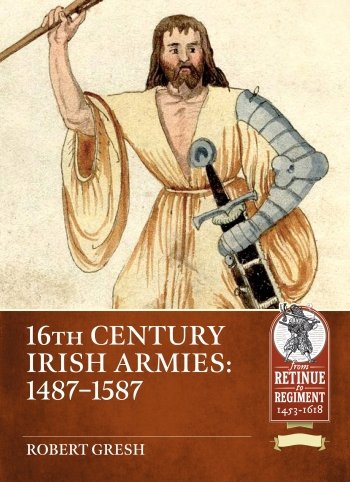-
Załączniki bezpieczeństwa
Załczniki do produktuZałączniki dotyczące bezpieczeństwa produktu zawierają informacje o opakowaniu produktu i mogą dostarczać kluczowych informacji dotyczących bezpieczeństwa konkretnego produktu
-
Informacje o producencie
Informacje o producencieInformacje dotyczące produktu obejmują adres i powiązane dane producenta produktu.HELION
-
Osoba odpowiedzialna w UE
Osoba odpowiedzialna w UEPodmiot gospodarczy z siedzibą w UE zapewniający zgodność produktu z wymaganymi przepisami.
The first of a series of two books for the Retinue to Regiment series covering Irish armies of the Tudor era, this covers military affairs in Ireland, 1487 to 1587. The second book in the series will cover the period of rapid Irish military modernization coincident with the Armada and the Nine Years War. Ireland at the outset of the Tudor era was a highly militarised society, with more than sixty Gaelic lordships maintaining independent armed forces. By 1540’s, the centralising Tudor state had ended the self rule enjoyed by the Anglo-Irish Pale, and was embarked on an increasingly severe programme of reconquest.
A key element of regaining central control over the island was the demilitarising of the Irish lordships, both Gaelic and semi-Gaelicised Anglo-Irish. Native resistance resulted in an increasingly costly series of large scale wars, fueled by the emergence of the Reformation. The book traces the development of Irish armies during the period, including the latest studies on the question of modernisation: i.e., the “Military Revolution.” Recent scholarship has called into question many long standing assumptions about Ireland in this period, including the degree of contact and commerce with mainland Europe, and the ability of Irish society to adapt to, and absorb, outside influences. A new appreciation of these questions helps place Tudor Irish military culture in a European context, calling for a reassessment of the degree to which Irish armies were outdated. While an expression of a profoundly traditional culture, they are found to be suited to purpose and eager to adopt firearms at nearly the rate seen in England.
The early part of this period saw Irish lordships enjoying a degree of local autonomy, exploiting newly found sources of wealth—principally fish—and expressing great confidence in a building boom of castles and associated churches and monasteries with continental affiliations. The book covers the phenomenon of large scale castle building in this era, which has left Ireland the mosts heavily castellated landscape in Europe.
Also included are comprehensive army lists and unprecedented detail on Irish arms and armour of the period, tracing developments over time. New period sources and iconography are made use of. Besides the “rising out” of the Pale and the traditional Irish troop types (horseman, galloglass and kern), a thorough examination is made of Scots Highland mercenary activity in Ireland, including weapons and organisation. Also featured are the naval forces of the West Highland Scots and maritime clans of Ireland, including strength and changes in ship types over time.








